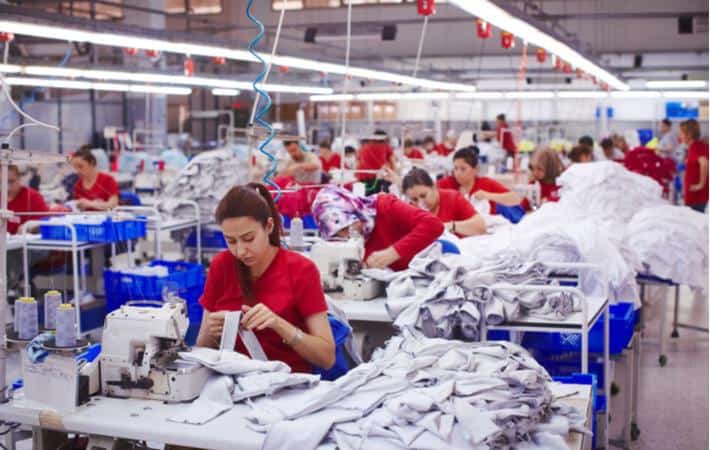
Courtney Brunson is a student at Harvard Law School and member of the Harvard Legal Aid Bureau.
The House of Representatives passed the Protecting the Right to Organize (PRO Act) yesterday with five Republicans joining Democrats in favor of the legislation to make it a 225-206 vote. Though the bill is unlikely to advance in the Senate given a lack of Republican support for the legislation, this measure is seen as the most pro-labor legislation passed since the NLRA. Katrina vanden Heuvel, editor and publisher of The Nation magazine, wrote in an op-ed at the Washington Post yesterday that now is the perfect time for such a measure to pass. She points toward polling which indicates that not only are young people strongly in support of strengthening unions but they are also a part of a diverse new generation of labor leaders that are forming coalitions to fight back against anti-union campaigns. She furthers that the Biden Administration’s emphasis on “no intimidation, no coercion, no threats, no anti-union propaganda” reiterates the federal government’s legal responsibility to support collective bargaining at a time when 27 states have passed “right-to-work” laws. The New York Times reported on how President Biden’s pro labor stances have also influenced his policymaking in other areas. It points, for example, to the President’s commitment of “good-paying union jobs” being at the core of his infrastructure plan as well as his efforts to provide labor rights to home care and healthcare workers who were excluded from previous labor federal protections.
On International Women’s Day, Harpers Bazaar wrote an article that paralleled L.A.’s garment workers campaigns’ to get more workplace protections in the 21st century to the efforts of New York garment workers at the onset of the 20th century to do the same (in the strikes that would become known as the Uprising of the 20,000). Both groups comprised a majority of female and immigrant workers; both faced exploitation, threats, long workweeks, and piecework pay. Though most industry production now takes place abroad, the article explained how an estimated 45,000 laborers continue to work in hazardous workplaces. Citing a 2016 report from the UCLA Labor Center, the Garment Worker Center, and the UCLA Labor Occupational Safety and Health, the article explained that surveys from hundreds of garment workers indicated that a majority of them worked in spaces that were so overwhelmed by dust accumulation and excessive heat from poor ventilation that it made it difficult for them to work – and even breathe. To address these issues, writer Chelsey Sanchez points toward the Garment Worker Protection Act, a piece of legislation that State Senator María Elena Durazo and advocates have introduced in the California legislature as Senate Bill 62 in December 2020. The legislation would expand liability to retailers, prohibit the practice of the piece-rate pay system, and authorize the Labor Commissioner’s Bureau of Field Enforcement to investigate and cite guarantors for wage theft.
In international labor news, human rights and labor advocates have expressed outcry over an event groups are calling “Bloody Sunday” that occurred this past weekend. According to local reports, at least nine left-wing activists and labor leaders were executed at their homes and offices as part of a series of coordinated raids carried out jointly by the military and police in four provinces in the Calabarzon region of the Philippines after President Rodrigo Duterte ordered security forces to “finish off” communists in the country. The activists who were killed had reportedly worked for a variety of labor organizations, including a group that works on behalf of Philippine fishermen and another that campaigned for the rights of the urban poor. Human right groups have warned that the president’s anti-left crusade is terrorizing and repressing leftists throughout the country by eliminating the distinction between “armed rebels and non-combatant activists, labor leaders, and rights defenders.” In response to these concerning reports, Butch Olano, Philippines section director at Amnesty International, released a statement on Monday saying the following: “Government officials, especially at the highest levels must end the ongoing incitement of extrajudicial killings and immediately implement measures in line with the recommendations of the U.N. High Commissioner’s 2020 report.”
The death of a 31-year-old Cambodian worker, Nuon Sokkheng, at a farm near Pocheon, South Korea in December has amplified existing criticisms of South Korea’s foreign worker policies. According to VOA, there are around 20,000 Asian migrant workers legally working on South Korean farms, mostly from Cambodia, Thailand, Vietnam, Indonesia, and Nepal. They were brought in under the country’s Employment Permit System (EPS), which makes it extremely difficult for workers to leave their employers, even when they are severely overworked or treated badly. Activists and workers say migrant workers in certain areas work 10-15 hours a day, with only two Saturdays off per month. In addition, they typically earn around $1,300-1,600 per month, which is well below the legally required pay their financial agreements are supposed to guarantee. Though larger structural reforms need to occur to address these issues, Nuon Sokkheng’s death has seemingly encouraged South Korea to implement plans – like increasing healthcare opportunities – to improve the situation of foreign and migrant farm workers.






Daily News & Commentary
Start your day with our roundup of the latest labor developments. See all
December 22
Worker-friendly legislation enacted in New York; UW Professor wins free speech case; Trucking company ordered to pay $23 million to Teamsters.
December 21
Argentine unions march against labor law reform; WNBA players vote to authorize a strike; and the NLRB prepares to clear its backlog.
December 19
Labor law professors file an amici curiae and the NLRB regains quorum.
December 18
New Jersey adopts disparate impact rules; Teamsters oppose railroad merger; court pauses more shutdown layoffs.
December 17
The TSA suspends a labor union representing 47,000 officers for a second time; the Trump administration seeks to recruit over 1,000 artificial intelligence experts to the federal workforce; and the New York Times reports on the tumultuous changes that U.S. labor relations has seen over the past year.
December 16
Second Circuit affirms dismissal of former collegiate athletes’ antitrust suit; UPS will invest $120 million in truck-unloading robots; Sharon Block argues there are reasons for optimism about labor’s future.